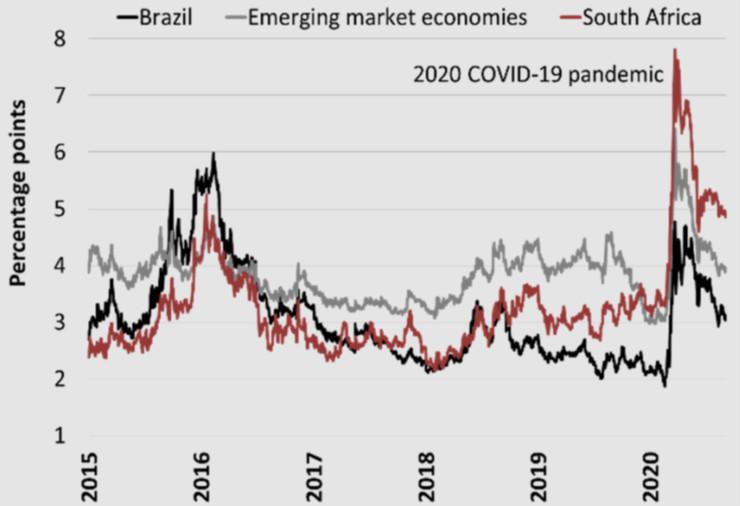(Extract from the Medium Term Budget Policy Statement)
Credible fiscal and economic reforms, the full effects of which may only be realised over the medium term, can reduce government borrowing costs and boost investor confidence in the short term, as recently demonstrated in Brazil.
Brazil and South Africa are often compared as developing-country peers. In both nations, GDP growth rates have declined over the past decade, partly due to weaker commodity prices and reduced business confidence, and government debt has risen rapidly. These fiscal challenges are reflected in elevated risk premiums – the higher returns governments must pay to compensate investors for perceived riskiness – and elevated bond yields.
South Africa and Brazil have tended to move closely together in both categories. Since late 2018, however, Brazil’s risk premium and the yield on its 10-year government bond have declined in comparison with South Africa. Although its debt has risen sharply, Brazil has made significant progress on a range of long-awaited and far-reaching reforms. This included simplifying its tax system (one of the world’s most complex systems) and revisions to its pension framework. It is now estimated that Brazil’s debt will no longer balloon to over 140 per cent of GDP over the next decade, but rise on a more moderate trajectory to about 100 per cent of GDP by 2030. As investor confidence subsequently improved, lower borrowing costs created additional fiscal space beyond the direct economic effect of the reforms.
Developing economy risk premiums: Source: Bloomberg

